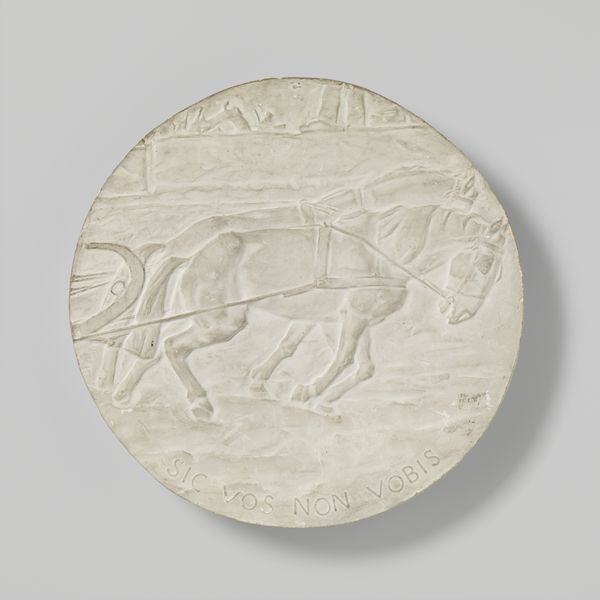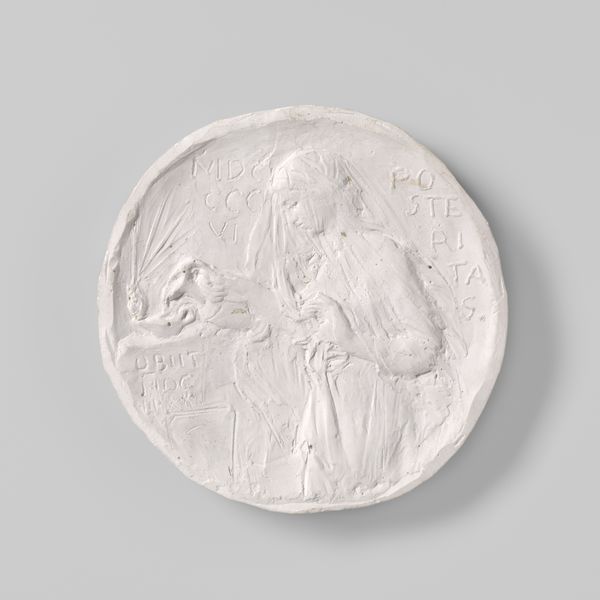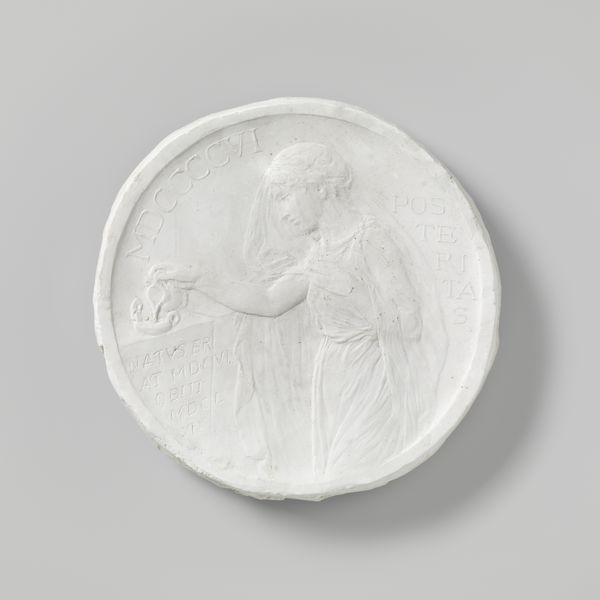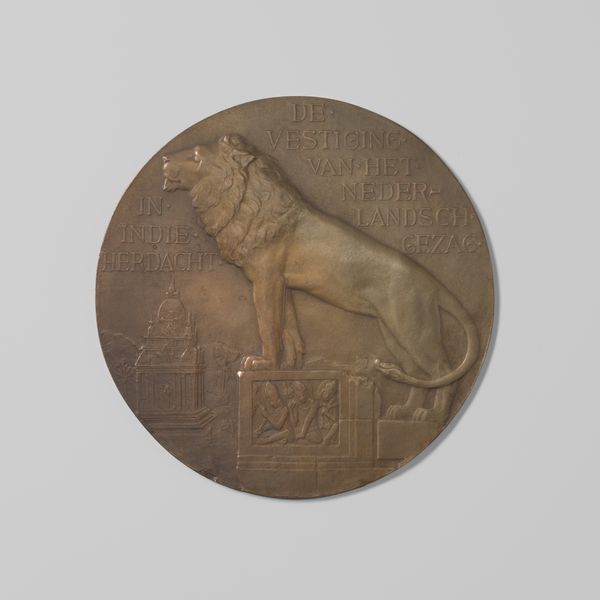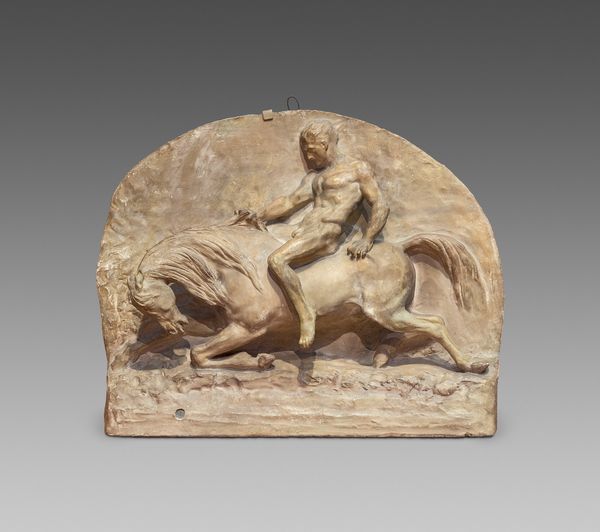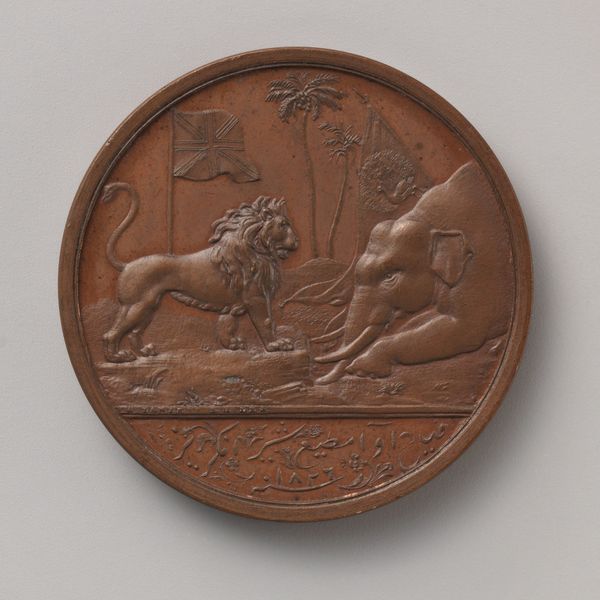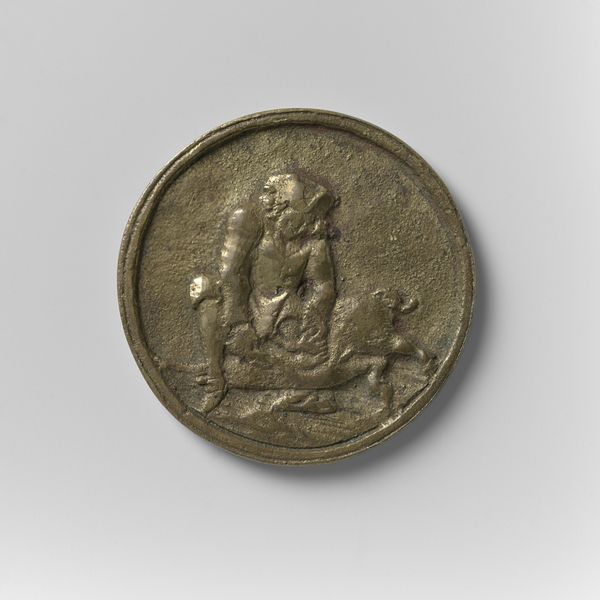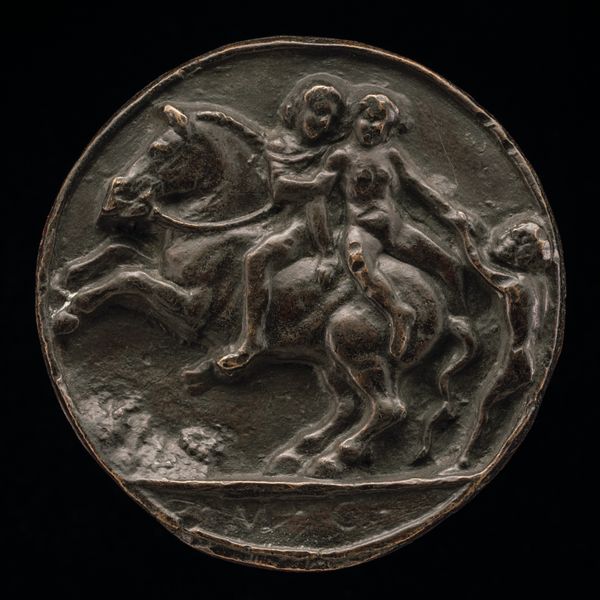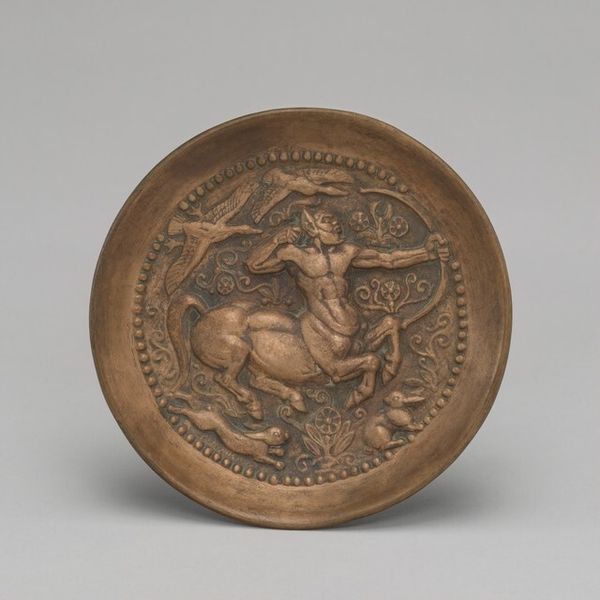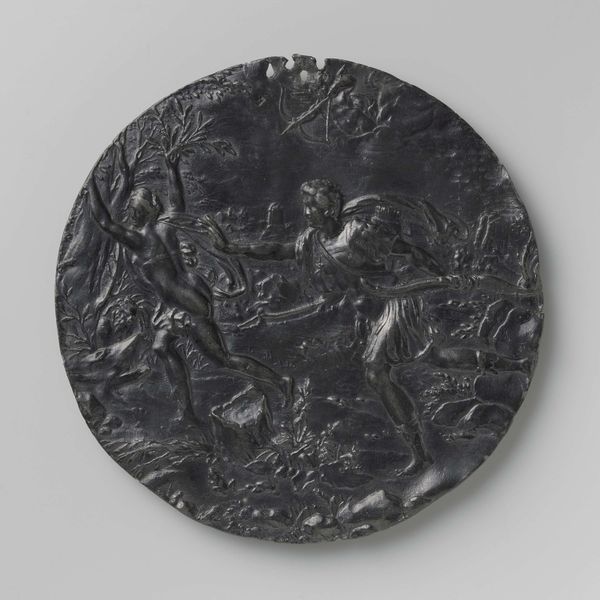
relief, bronze, sculpture
#
portrait
#
asian-art
#
relief
#
bronze
#
figuration
#
sculpture
#
orientalism
Dimensions: diameter 6.0 cm, weight 77.79 gr
Copyright: Rijks Museum: Open Domain
Editor: So, this is a bronze relief titled "De landbouw in Nederlandsch Oost-Indië 1933," which translates to "Agriculture in the Dutch East Indies 1933", by Hendrik Albertus van den Eijnde. It depicts a child riding a water buffalo. I find the simple composition quite striking. How do you interpret this work? Curator: The subject matter, created in 1933, invites us to think about the public role of art under colonialism. The Dutch East Indies, now Indonesia, was under Dutch rule. This image seemingly celebrates agriculture, but how does it participate in the colonial project's imagery? Consider its representation; a local child atop an animal associated with labor. How do you see that playing into power dynamics? Editor: I didn't think of it that way initially, but that's a crucial point! I focused on the innocence of the image. But the depiction of the child and the buffalo as symbols of labour controlled by the Dutch colonial administration gives it a new, unsettling dimension. Does the artwork critique or support the colonial structure? Curator: That's the ambiguity that makes it a compelling historical document. Bronze reliefs often serve commemorative or propagandistic purposes. Here, we need to question whether van den Eijnde intended to celebrate Dutch colonial prowess, or if the image inadvertently reveals the exploitative labor practices inherent in the agricultural system. Editor: So, looking at art like this forces us to confront the politics embedded within seemingly simple scenes? Curator: Precisely. It demands we analyze not just what is shown, but how and why, considering who commissioned it and its intended audience. These are important keys in understanding a work like this. Editor: It definitely shifted my perspective. I'll remember to consider the social context next time. Thanks for highlighting that. Curator: Likewise. Exploring the intersection of art, colonialism, and labor has enriched my own reading of this work too.
Comments
No comments
Be the first to comment and join the conversation on the ultimate creative platform.
